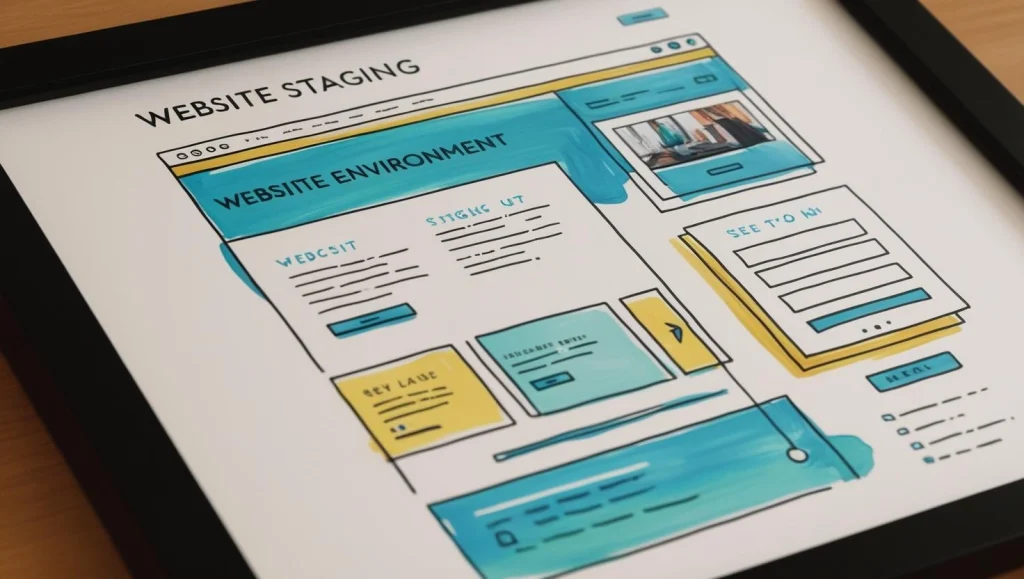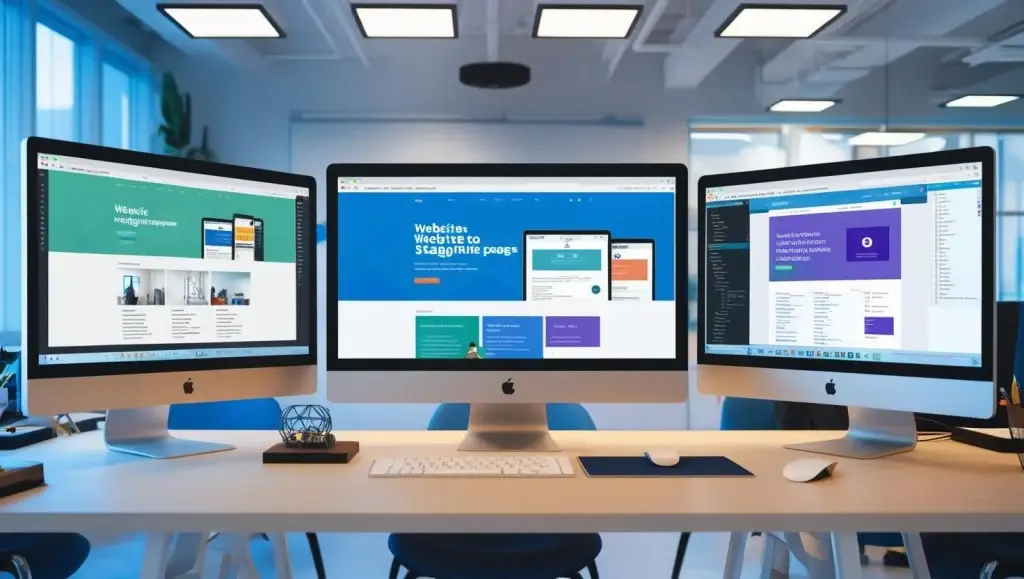When it comes to running a successful website for your business in Singapore, one of the most overlooked yet incredibly crucial practices is creating a staging site. Whether you’re managing a local café’s website in Tiong Bahru, running an eCommerce store in Orchard, or handling client portfolios for a creative agency in Bugis, the ability to test changes safely before they go live can save you from costly errors, downtime, and customer confusion.
In this comprehensive guide, we’ll walk you through how to create a staging site in WordPress, why it matters, and what specific benefits it brings to businesses in Singapore. From avoiding conflicts between plugins to testing performance tweaks during high-traffic seasons like 11.11, Chinese New Year, and the Great Singapore Sale, a staging site is a must-have in your web development toolkit.
1. What is a Staging Site?

A staging site is a clone of your live website. It exists in a private environment where you can test updates, new features, or design changes without affecting the live site that your customers or clients see.
Think of it as a digital test lab you get to experiment without any real-world consequences.
For example, if you’re updating WooCommerce plugins on your online store that sells local artisan products in Singapore, doing so on the live site might result in a cart issue or payment gateway error. But with a staging site, you can trial the updates in a safe space first.
2. Why Does a Staging Site Matter?
1. Avoid Breaking Your Website
Updating themes, plugins, or even WordPress core can sometimes cause unexpected issues. A staging site gives you the chance to test changes before making them public.
In Singapore, where businesses operate in a competitive and fast-paced digital landscape, even a few hours of website downtime can result in lost sales or credibility.
2. Stress-Free Plugin Testing
There are over 60,000 plugins in the WordPress repository. Not all of them play nicely together. Staging sites allow you to test plugins in a safe environment—ideal for businesses running complex setups like multi-vendor marketplaces or B2B quotation systems.
3. Design and Feature Previews
Planning a website redesign or adding new functionality (e.g., booking systems for tuition centres or car servicing workshops in Singapore)? A staging site lets you see the changes in action before pushing them live..
4. Critical for eCommerce
if you’re using WooCommerce to power your online store, you can’t afford glitches. A staging site allows for rigorous testing especially during high-traffic events such as Singles’ Day (11.11) or Lazada/Shopee Mega Campaigns.
5. Safe for Collaborations
Agencies, freelancers, or in-house developers working on your site can use the staging site to collaborate, develop, and test—without fear of affecting the user experience for your live customers.
How to Create a Staging Site in WordPress (The Practical Guide)
There are a few ways to set up a staging site, depending on your level of experience, hosting provider, and business needs.

Option 1: Use Your Hosting Provider’s Built-In Tools
Many managed WordPress hosting companies like SiteGround, Kinsta, or WP Engine offer one-click staging functionality.
Here’s how it typically works:
- Log into your hosting dashboard.
- Navigate to the WordPress installation you want to clone.
- Click “Create Staging Site” or similar.
- Wait for the environment to be cloned.
- Access the staging version via a separate URL (e.g., staging.yourdomain.com).
Best For: Singapore SMEs using premium managed hosting providers.
Option 2: Use a Plugin Like WP Staging
If your host doesn’t offer staging tools, you can install a plugin such as WP Staging.
Steps:
- Install and activate the WP Staging plugin from your WordPress dashboard.
- Go to WP Staging > Create New Staging Site.
- Choose a name for your staging site.
- Click “Start Cloning.”
- Wait for the process to complete, then access the staging environment.
Best For: Freelancers, startups, or small businesses with shared hosting or limited technical support.
Option 3: Manual Setup (Advanced Users Only)
For those with development experience or larger technical teams, you can manually create a staging site by:
- Cloning your website files to a subdomain (staging.yourdomain.com)
- Exporting and importing your database
- Updating the wp-config.php file and database URLs
- Securing the staging environment (e.g., with a password)
Best For: Tech-savvy teams managing complex or custom-built WordPress setups.
Protecting Your Staging Site
Always ensure that your staging environment is password-protected and hidden from public view. It might seem like a minor technical detail, but failing to secure your staging site can lead to significant consequences. If left unprotected, your staging site could be crawled and indexed by search engines like Google, resulting in duplicate content issues that negatively impact your SEO rankings. Search engines may not distinguish between your live and staging versions, which can dilute your domain authority, confuse search bots, and reduce your site’s visibility in search results.
More critically, publicly accessible staging sites can confuse real users, especially if they’re indexed and accidentally discovered. Imagine a potential client landing on your staging version—half-completed pages, test products, broken links, or outdated content could severely undermine your brand credibility. For businesses in Singapore, where digital trust plays a pivotal role in consumer decisions—especially in high-trust sectors like fintech, private education, medical clinics, legal services, and government-linked initiatives—the damage caused by such missteps could extend far beyond a simple SEO penalty.
Moreover, in a competitive and digitally mature market like Singapore, users expect a polished, professional, and fully functional web experience. If they stumble upon an unsecured staging version with placeholder content or non-functional features, they may form a negative impression and lose confidence in your brand. This is particularly problematic for businesses that depend heavily on digital touchpoints for customer acquisition and retention, such as eCommerce stores, software startups, or B2B service providers.
To prevent these issues, always do the following:
- Set up basic authentication or password-protection using your hosting panel (e.g., cPanel or Plesk).
- Ensure your staging site is blocked from search engines by using a robots.txt file with Disallow: / or setting the site to “noindex” via your SEO plugin.
- Avoid sharing the staging URL externally unless absolutely necessary—and even then, only with trusted collaborators or clients.
Ultimately, your live website should be the only version accessible to the public, and all experimental work should remain private until it’s fully tested, approved, and ready for deployment. In doing so, you protect not only your search engine rankings but also the trust and professionalism that your business works hard to build in Singapore’s digitally savvy marketplace.
What to Test on Your Staging Site?
Before pushing changes live, here’s a checklist of what you should test in your staging environment:
- Plugin and theme compatibility
- Contact forms and lead capture tools
- eCommerce cart and checkout functions
- Page loading speeds
- Mobile responsiveness
- Broken links or missing images
- Security features (like firewalls, login limits)
Singapore-Specific Use Cases for Staging Sites
Let’s break down some practical examples:
Tuition Centres or Private Education Providers
Use staging to update your class schedules, enrolment forms, or online payment systems during semester transitions.
Retailers and Online Shops
Test new product categories, payment gateways (e.g., GrabPay, PayNow), and seasonal campaigns during Chinese New Year or Hari Raya sales.
Corporate Firms and SMEs
Revamp your careers page or add a new corporate video without disrupting live content during working hours.
Agencies and Freelancers
Collaborate with clients on staging environments to get approvals on designs, content, and functionality without back-and-forth guesswork.
Why Singapore Businesses Should Priorities Staging Sites
In today’s digital-first Singapore economy, websites are not just optional—they’re mission-critical. Whether you’re an SME owner in Toa Payoh, a tech startup in One-North, or a creative agency in Chinatown, staging sites are essential tools for ensuring professionalism, reliability, and peace of mind.
With the government continuing to support digital adoption through grants like the Productivity Solutions Grant (PSG), now’s the perfect time to build better digital practices—and creating a WordPress staging site is an easy win that pays long-term dividends.
Final Checklist
- Do you currently have a staging site set up?
- Are you testing major changes before they go live?
- Have you protected your staging environment with a password?
- Do you regularly sync staging with your live site?